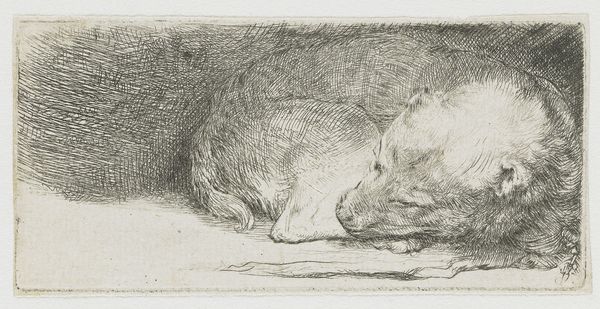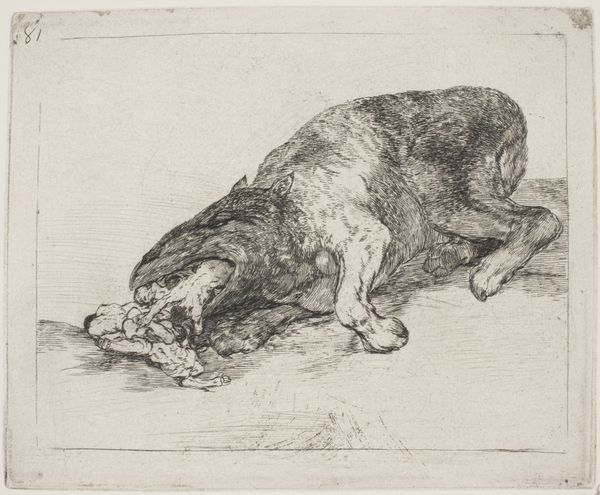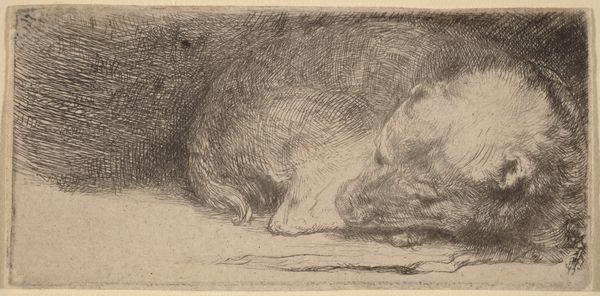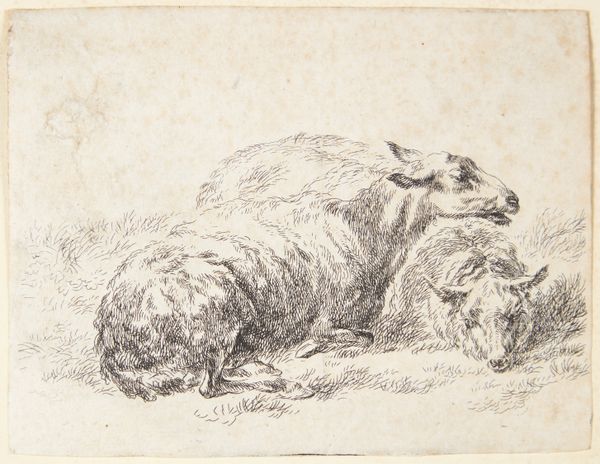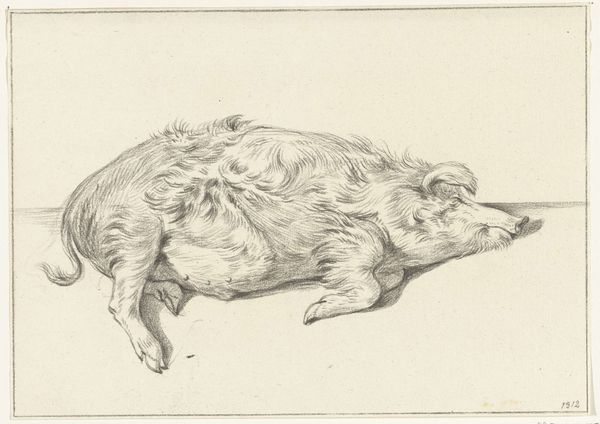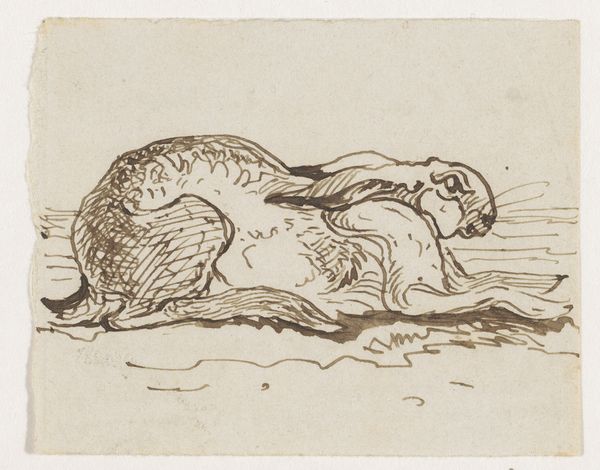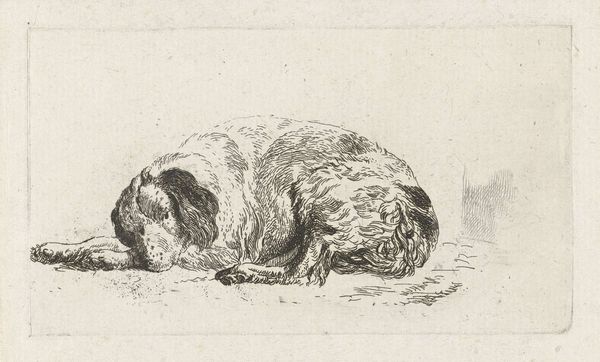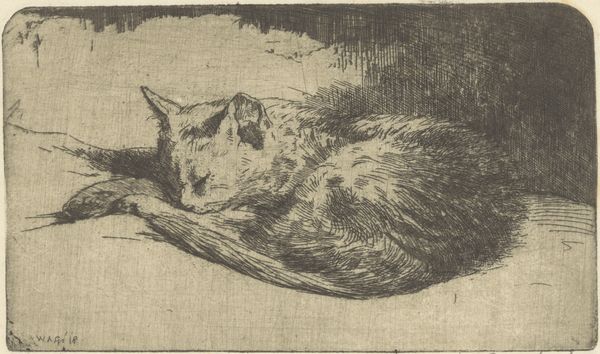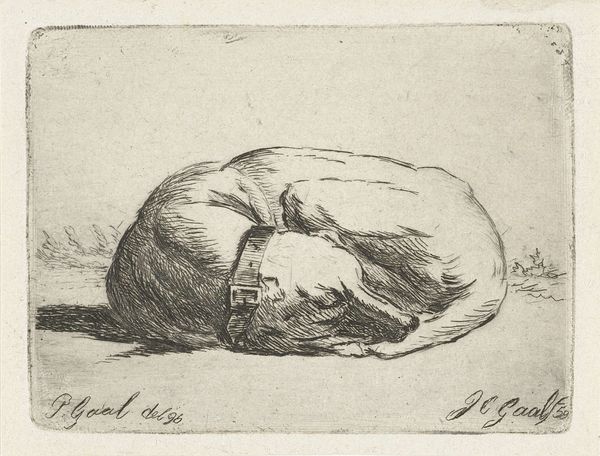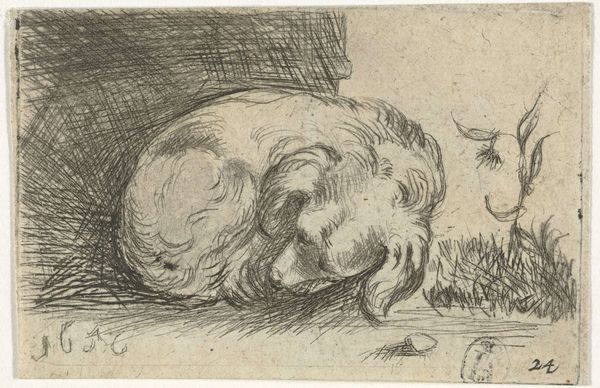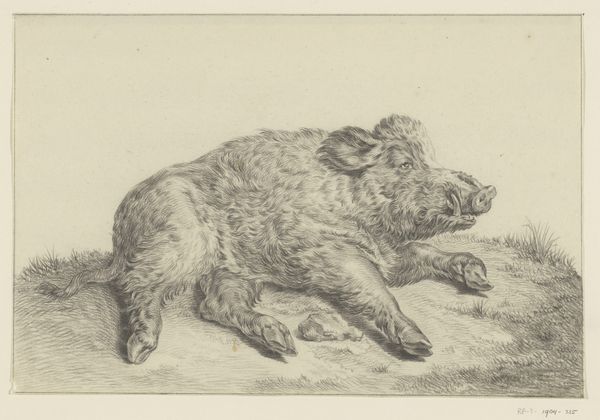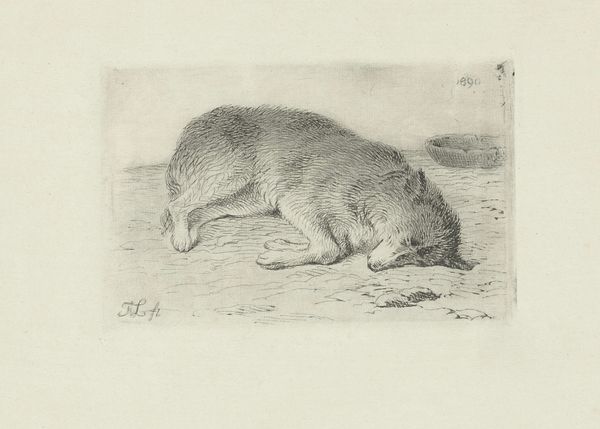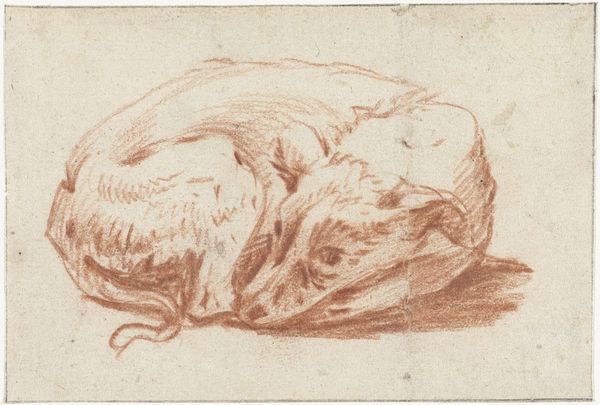
print, etching
#
portrait
#
animal
# print
#
etching
#
dog
#
genre-painting
#
realism
Dimensions: height 49 mm, width 64 mm
Copyright: Rijks Museum: Open Domain
Curator: Willem Adrianus Grondhout's "Slapende Hond," or "Sleeping Dog," is an etching that likely dates from between 1888 and 1934. It resides here at the Rijksmuseum. My immediate impression is how deeply the texture created by the etching marks imbues the subject with a comforting, almost woolen softness. Editor: Yes, the density of the lines absolutely suggests the materiality of fur, creating a tactile quality that transcends the print medium itself. It’s also fascinating how this focus on a commonplace animal can be read in the context of urbanization and its discontents during that period. Did Grondhout see something special in this domestic animal worthy of artistic attention at this time of immense socio-cultural change? Curator: It’s hard to say definitively, but let’s look at the technique a little closer. The relatively unadorned approach to this genre painting is typical of etching and Realism. Grondhout clearly understood the interplay between light and shadow—especially the labor involved in the patient crafting of so many delicate lines to create contrast. Editor: Precisely! It suggests a deep concern with working class lives, an unspoken connection between humans and animals who existed then on the fringes of economic systems. How might this humble animal speak to experiences of vulnerability and social position in 19th and 20th century Dutch society? Curator: Or perhaps the print was a commercially produced multiple meant for bourgeois consumption. Maybe the art market and modes of production drove these thematic choices more so than direct activism? Editor: That may be. Ultimately, whatever the circumstances of its making and marketing, it’s hard not to read something into such an intimate portrait, considering the cultural position of pets, of the place of working animals... Curator: Agreed. The artist's hand, literally etched into the plate, immortalizes a common creature in an era of immense, perhaps destabilizing change. That’s not nothing. Editor: And understanding that complex negotiation—the subject, its maker, its period, its afterlife as a cultural artifact—opens rich critical space for a contemporary audience, like ourselves, who are more attuned than ever to intersections of identity and lived experience.
Comments
No comments
Be the first to comment and join the conversation on the ultimate creative platform.
